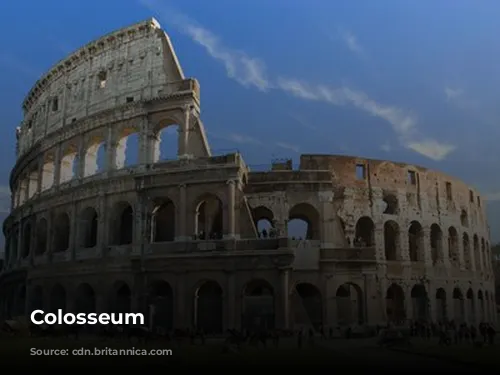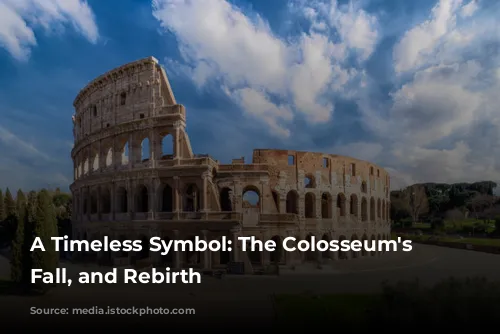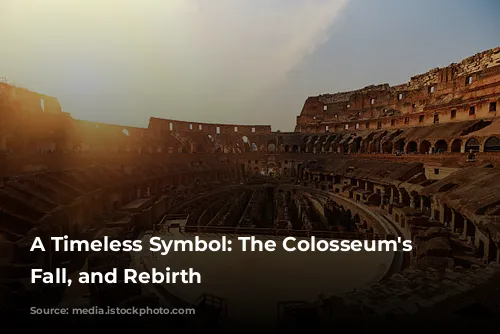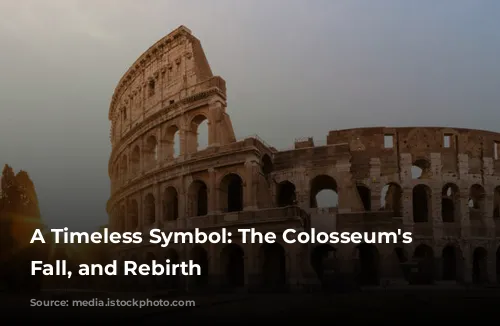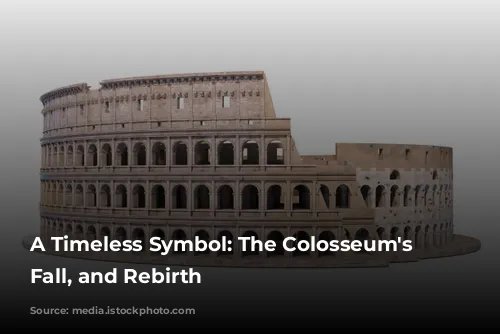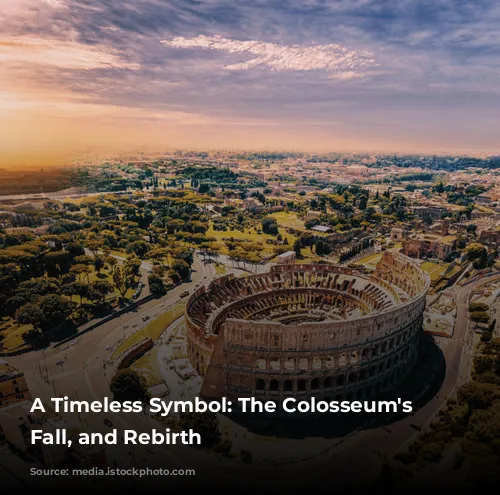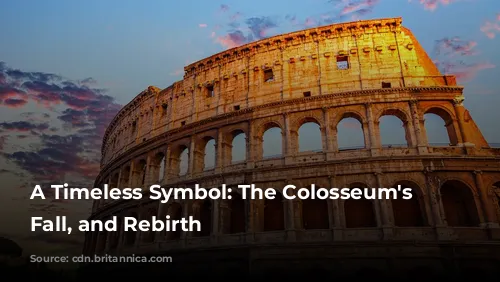The Colosseum, an architectural marvel and one of the few intact structures from the Roman Empire, stands as a testament to ancient Rome’s engineering brilliance. This magnificent amphitheater is not only a historical treasure but also a significant contributor to Italy’s tourism revenue. In 2018, the Colosseum, Roman Forum, and Palatine Hill generated over $63.3 million (€53.8 million), making it Italy’s most lucrative tourist attraction.
A Turbulent History: From Glory to Neglect and Restoration
The Colosseum’s fate after the fall of the Western Roman Empire was far from glorious. It fell into disrepair, becoming a fortress for the Frangipane and Annibaldi families in the 12th century. In the late 15th century, Pope Alexander VI allowed the Colosseum to be plundered for building materials, transforming it into a quarry. This neglect continued for over a thousand years until state-funded restoration efforts began in the 1990s.
A Symbol of Imperial Might: The Colosseum’s Purpose
The Colosseum’s construction was driven by the Roman Empire’s desire to revitalize Rome after the chaotic “Year of the Four Emperors” in 69 CE. Emperor Vespasian, like other emperors before him, envisioned the Colosseum as an entertainment venue, hosting thrilling gladiatorial contests, hunts featuring exotic animals, and even mock naval battles.
A Monument to Engineering: The Colosseum’s Construction
Construction of the Colosseum began under Emperor Vespasian between 70 and 72 CE. Vespasian’s son and successor, Titus, dedicated the completed structure in 80 CE. Emperor Domitian, in 82 CE, added the fourth story to the Colosseum. Notably, the Colosseum’s construction was financed by the spoils from Titus’s sack of Jerusalem in 70 CE, and the labor force was made up of Jewish slaves from Judaea.
A Colossal Structure: The Colosseum’s Design and Dimensions
The Colosseum, also known as the Flavian Amphitheatre, is an elliptical structure made of stone, concrete, and tuff, standing four stories tall at its highest point. This massive amphitheater measures 620 by 513 feet (189 by 156 meters), capable of accommodating up to 50,000 spectators. The Colosseum, famously used for gladiatorial combat, stands as a powerful symbol of Roman power and spectacle.
A Symbol of Imperial Power: The Colosseum’s Location
The Colosseum’s location was not simply a matter of convenience. It was built on the grounds of Nero’s infamous Golden House, replacing the artificial lake that had once been its centerpiece. Vespasian, whose rise to power was humble compared to Nero’s tyranny, chose to replace the emperor’s private lake with a public amphitheater designed to entertain tens of thousands of Romans. This decision was as much symbolic as practical, showcasing the Flavian emperors’ commitment to the public good.
A Monumental Engineering Feat: The Colosseum’s Construction and Design
The Colosseum’s construction was a monumental undertaking, unlike earlier amphitheaters, which were typically built into hillsides for extra support. The Colosseum was a freestanding structure of stone and concrete, employing a complex system of barrel vaults and groin vaults. The three lower stories were adorned with arcades framed by engaged columns in the Doric, Ionic, and Corinthian orders. This rising arrangement of columns later became the basis for the Renaissance concept of the “assemblage of orders.” The primary structure and facade were built with travertine, secondary walls were made of volcanic tufa, and the inner bowl and arcade vaults were made of concrete.
A Spectacle for the Masses: The Colosseum’s Events and Amenities
The Colosseum was equipped to shield its massive audience from the sun with a retractable velarium (awning) supported by masts extending from corbels on the top story. Hundreds of Roman sailors were needed to manipulate the rigging that extended and retracted this awning. The Colosseum was the scene of countless gladiatorial contests, animal hunts, and even mock naval battles. While its role in the martyrdom of early Christians is uncertain, it stands as a witness to the violent and spectacular entertainment that captivated Roman audiences.
A Legacy of Resilience: The Colosseum’s Preservation and Future
Throughout medieval times, the Colosseum served as a church and a fortress, but it was also subjected to significant damage from lightning strikes, earthquakes, vandalism, and pollution. The marble seats and decorative materials were plundered, leaving the Colosseum in a state of near ruin for over a thousand years. It wasn’t until the 19th century that serious preservation efforts began, culminating in a major restoration project in the 1990s. Today, the Colosseum remains one of Rome’s most visited attractions, welcoming nearly seven million visitors annually. Regular exhibitions showcasing ancient Roman culture further enrich the visitor experience.
The Colosseum stands as a timeless symbol of Roman engineering prowess, imperial ambition, and the enduring fascination of the ancient world. Its turbulent history, from its grand beginnings as a symbol of power to its neglect and eventual restoration, adds to its allure. As a testament to Roman ingenuity and a window into the past, the Colosseum continues to enthrall visitors from around the globe, reminding us of the enduring legacy of ancient Rome.


